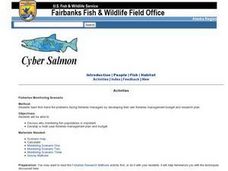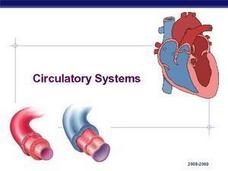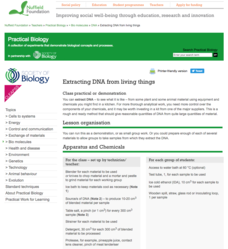Curated OER
Oil Spill!
Fourth and fifth graders take a close look at oil spills and the devastating effects they have on the environment. They explore the various methods for cleaning up oils spills and perform and hands-on simulation of an oil spill in class....
Curated OER
Go Fish!
Eighth graders use goldfish crackers to simulate a capture-recapture method of data collection. They fill in a chart and determine the averages. They find the estimated population of fish and the actual population of fish based on the...
Curated OER
Fish Fact Rummy
Seventh graders study and explore the base of PA game fish species and characteristics. In this cooperative learning lesson students create a fish fact game by researching information on certain species then play it.
Curated OER
Fisheries Research Methods
Learners explore how scientists keep track of fish populations and why it is important to do so. They describe three methods currently used to sample fish populations. They participate in activities to simulate several of the sampling...
Curated OER
Fisheries Monitoring
Learners discuss why monitoring fish populations is important. They develop a multi-year fisheries management plan and budget.
Curated OER
Fishing gear
Students investigate he fishing gear and techniques utilized by commercial fishers in Magdalena Bay. They determine the ecological impacts of different fishing techniques.
Curated OER
Cooking on the Lewis and Clark Expedition
Students explain the challenge to find and cook during the Lewis and Clark Expedition. They practice frying techniques. They recognize the appearance and consistency of cooked fish.
Curated OER
Gyotaku Lesson Plan
Young scholars study the Japanese art of fish painting called Gyotaku while examining the lifestyle of Japanese fishermen at the end of the Edo period. They make a Gyotaku fish print and write a haiku poem using the proper number of...
Curated OER
Mathemafish Population
It's shark week! In this problem, young mathematically minded marine biologists need to study the fish population by analyzing data over time. The emphasis is on understanding the average rate of change of the population and drawing...
Curated OER
Circulatory Systems
A slideshow that covers the all-important details related to basic human circulation. The reasoning for exchange of material methods is presented and then labeled diagrams of the main human transfer systems are shown, along with...
Curated OER
the Journey of the Pacific Salmon in the Open Ocean and Fishing
Third graders discuss salmon and their life cycle. In this salmon life cycle activity, 3rd graders recognize the difficulties researching the life cycle of salmon as they migrate. Students conduct an experiment and create a game.
Curated OER
Development of the English Colonies
Students research one of the original 13 colonies using the included worksheet. They also record their findings on a poster board to use during a class presentation. Students then take notes on the presentations using the provided...
Royal BC Museum
Kids Page - Whales
Read about the physical features of whales and how they are grouped according to their method of eating food. A neat activity is described on the page; consider carrying this out in class. The resource makes a nice addition to a lesson...
Curated OER
Kidney Structure and Function: removing intracellular waste
Your class will learn all about the function of the kidney and how it operates in animals from different habitats. The methods of absorption, filtering and excretion are detailed and pupils will learn of the different disposal methods...
Curated OER
Faking It
Middle school earth scientists describe the behavior of the Coriolis force. They compare and contrast conditions under which the Coriolis force has a significant impact with conditions under which it has very little. They model the...
Florida Center for Reading Research
Phonological Awareness: Phoneme Isolating, Move and Tell
Build phonological awareness with this fun game focused on isolating and identifying medial phonemes. This game board contains an image on each square; when the child lands on a square, they must say the medial sound of the word they...
Balanced Assessment
Disc-Ness
Transform your scholars into mathematicians as they develop their own geometric definition. The task asks individuals to compare cylindrical objects and create a definition for the disc-ness of each object. They may use any method and...
Nuffield Foundation
Extracting DNA from Living Things
Help! Someone's trying to take my DNA! An interesting lab experiment has scholars use basic materials to extract DNA. By applying ethanol, cold water, and a protease enzyme, like pineapple juice, they pull strands of DNA from peas,...
Curated OER
Something Fishy
Students identify and discuss the adaptive characteristics and behaviors of fish. They view slides of fish, and design and create a model of a fish of the future, listing the ways their fish adapt to survive.
Curated OER
Something's Fishy
Fourth graders identify parts of a fish. In this fish anatomy lesson, 4th graders identify parts of fish in a group setting and then complete a worksheet about the parts of a fish.
Curated OER
Gyotaku Lesson Plan
Young scholars examine and discuss the history and process of Gyotaku, or fish prints. They view images of Gyotaku, create a fish print, and write a haiku.
Curated OER
Estimating Fish Populations
Students describe the mark/recapture method used to estimate fish populations. They explain the importance of being able to predict population numbers.
Curated OER
Something Fishy
Students synthesize what they have learned about the anatomy of fish and their methods of adapting to survive.
Curated OER
Ten Sly Piranhas: Subtraction with Goldfish Crackers
Class members listen to the William Wise book Ten Sly Piranhas and act out the story with one child playing the piranha. They use goldfish crackers (eating them to show subtraction) to demonstrate and understand equations they see on...

























